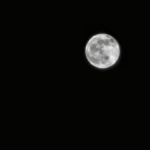Navigating the Night Sky: Tonight’s Planetary Lineup Revealed!
The night sky, a vast canvas painted with the twinkling of stars and the wandering paths of planets, has captured human imagination for millennia. From ancient civilizations that built monuments to mark celestial events, to modern astronomers who utilize advanced technology to study the cosmos, our fascination with the universe remains undiminished. Tonight’s planetary lineup offers an extraordinary opportunity to gaze upon some of the most prominent celestial bodies visible to the naked eye. In this article, we will explore what you can expect to see tonight, how to identify these planets, and delve into the science behind their movements.
The Dance of the Planets
A Celestial Parade
Tonight’s planetary lineup features several planets that have garnered significant attention: Mercury, Venus, Mars, Jupiter, and Saturn. Each planet offers its own unique characteristics and visibility conditions. Here’s a brief overview of what to expect:
- Mercury: The closest planet to the Sun, Mercury can be challenging to spot due to its proximity. However, it often shines brightly during twilight.
- Venus: Known as the “Evening Star,” Venus is one of the brightest objects in the night sky.
- Mars: The Red Planet stands out with its distinct reddish hue, often visible even in light-polluted areas.
- Jupiter: The largest planet in our solar system, Jupiter is renowned for its bright appearance and spectacular moons.
- Saturn: With its stunning rings, Saturn is a favorite among stargazers.
Visibility Conditions
Before venturing outside, it is essential to check the visibility conditions in your area. Light pollution, atmospheric conditions, and the time of year can all affect your ability to see these planets. A clear night with minimal artificial light is ideal for the best stargazing experience.
Tools for the Astronomer
Binoculars and Telescopes
While many planets can be seen with the naked eye, using binoculars or a telescope can enhance your viewing experience. Binoculars are portable and easy to use, providing a wider field of view than a telescope. On the other hand, a quality telescope can reveal intricate details such as Jupiter’s Great Red Spot or Saturn’s rings.
Mobile Apps
In the age of technology, mobile applications have revolutionized astronomy. Apps like SkySafari, Stellarium, and SkyView allow enthusiasts to identify celestial objects in real-time. By simply pointing your phone at the sky, you can learn about stars, constellations, and planets visible in your vicinity.
Historical Significance
Ancient Civilizations
The planets visible tonight have been observed for centuries, influencing many ancient civilizations. The Babylonians, Egyptians, and Greeks all had elaborate astrological systems based on the movements of these celestial bodies. For instance, the Romans named the planets after their gods, integrating them into their mythology.
Navigation and Agriculture
Before the advent of modern navigation tools, mariners relied on the stars to guide them across open waters. Similarly, farmers observed the skies to determine the best planting and harvesting times, showcasing the planets’ influence on early human life.
The Science Behind Planetary Motion
Orbits and Eccentricities
The planets in our solar system follow elliptical orbits around the Sun, governed by the laws of gravity described by Isaac Newton and later expanded upon by Albert Einstein. Each planet has a unique orbital period, meaning they take different amounts of time to complete a full revolution around the Sun.
For instance, Mercury takes just 88 Earth days to orbit the Sun, while Neptune takes a staggering 165 Earth years. These varying orbital periods lead to different appearance patterns in the night sky.
Retrograde Motion
One intriguing phenomenon is retrograde motion, where a planet appears to move backward across the sky. This effect occurs due to the relative positions of Earth and the other planets in their orbits. It is particularly noticeable with planets like Mars and Jupiter, leading to an exciting discussion among amateur astronomers.
Tonight’s Lineup: A Closer Look
Mercury
Mercury will set just after sunset, making it an ephemeral sight. Look toward the western horizon, where it will appear as a bright dot against the fading light. Mercury’s binary nature—simultaneously being both terrestrial and rocky—gives it a unique place among the planets.
Venus
As dusk settles, Venus will become increasingly prominent in the western sky. Its brilliance often outshines all other celestial objects, except the Moon. Additionally, Venus exhibits phases similar to the Moon, allowing astronomers to study its atmospheric conditions and surface characteristics.
Mars
Mars, known for its reddish appearance, is positioned to the southeast. Its distinct color makes it easily identifiable. During opposition, when Mars is closest to Earth in its orbit, it shines more brightly than usual, making it a popular target for enthusiasts.
Jupiter
Jupiter will rise to the east, showcasing its immense size and brightness. Although detailed observation may require a telescope, Jupiter’s four largest moons—Io, Europa, Ganymede, and Callisto—can often be seen with binoculars. These moons, known as the Galilean moons, were first observed by Galileo in the early 17th century.
Saturn
Rising later in the evening, Saturn will be visible toward the southeast. Its rings, composed of ice and rock particles, are among the most awe-inspiring sights in astronomy. Even a basic telescope can reveal the beauty of Saturn’s rings, making it a favorite among novice stargazers.
Stargazing Tips
A successful stargazing experience relies on preparation. Here are some tips to enhance your experience:
- Choose the Right Location: Find a dark area away from streetlights and city pollution.
- Time Your Viewing: The best time to observe planets is shortly after sunset or before dawn.
- Bring a Star Chart: A star chart or mobile app will help you identify planets and constellations.
- Dress Appropriately: Temperatures can drop unexpectedly at night, so wear layers to stay comfortable.
- Be Patient: Allow your eyes to adjust to the darkness, and don’t rush the experience.
Engaging with the Community
Astronomy clubs and online communities are excellent resources for both novices and seasoned stargazers. Participating in local events or joining online forums can provide insights, equipment tips, and camaraderie.
Community Events
Many cities host public viewing nights at local observatories or parks, allowing people to gather, share knowledge, and gaze at the night sky together.
Social Media
Platforms like Twitter, Instagram, and Reddit have vibrant communities dedicated to astronomy. Joining these groups can offer real-time updates on celestial events, share breathtaking photographs, and answer questions.
Conclusion
Tonight’s planetary lineup is an opportunity to engage with the night sky and reflect on humanity’s ongoing connection with the cosmos. As we gaze upon Mercury, Venus, Mars, Jupiter, and Saturn, we are reminded of our place in the universe—a tapestry woven from the light of the stars and the mysteries of the planets.
Further Exploration
As you enjoy the celestial sights, consider delving deeper into the study of astronomy. Books, online courses, and podcasts can serve as invaluable resources. The universe is vast, and each planet holds secrets waiting to be uncovered.
So tonight, bundle up, head outside, and let the wonders of the night sky inspire awe and curiosity. After all, we are all stardust sharing the same universe.
Footnotes
- The Solar System: A Brief Overview
- Astronomy Apps: Your Guide to the Night Sky
- The Influence of Celestial Bodies on Human History
- Understanding Retrograde Motion
- The Importance of Stargazing
Feel free to reach out if you need more specific sections, additional details, or adjustments!






















Add Comment